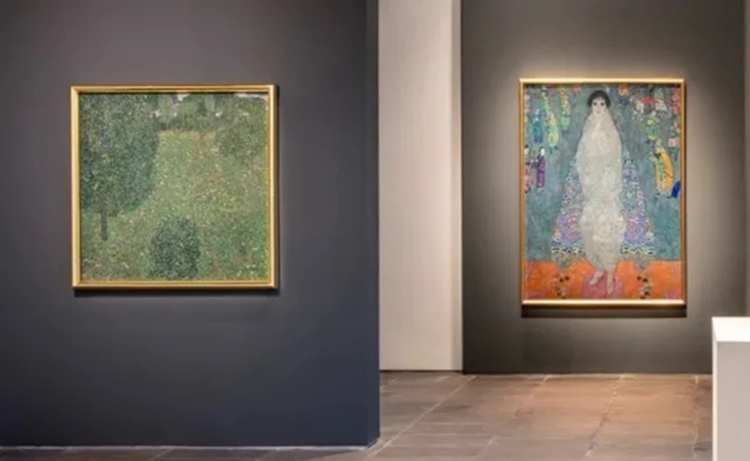
Klimt Breaks Record at Sotheby’s
Rare Klimt Painting Becomes Most Expensive Modern Art Ever Sold at Auction
What do a notorious gold toilet and a nearly destroyed Klimt painting have in common? They both kicked off Sotheby’s first auction at its new US headquarters in New York on Tuesday night, in a lively, record-breaking affair.
At the start, Gustav Klimt’s headline painting, “Portrait of Elisabeth Lederer,” became the most valuable modern artwork ever sold at auction, fetching $236.4 million amid cheers and applause during the 20-minute bidding war.
It was also the most expensive work of art ever sold by Sotheby’s worldwide.

The portrait of the young daughter of Klimt’s patrons, painted in the artist’s final years, was saved from destruction during World War II when it was separated from other works that were later burned in a fire at Immendorf Castle in Austria.
The lot was “truly one of the last opportunities to acquire a portrait of this importance by the artist,” said auctioneer Oliver Barker, Sotheby’s European Chairman, during the sale.
In 2023, Klimt’s last completed portrait, “Dame mit Fächer” (Lady with a Fan), sold for US$108.4 million.
The Lederer portrait, which surpassed the previous record set by an Andy Warhol work in 2022, was part of the collection of Estée Lauder heir Leonard A. Lauder, who passed away earlier this year.
Throughout the auction, most works met or exceeded their highest estimates, including an Edvard Munch painting that sold for $35.1 million and a Klimt landscape for $86 million.
The tone was set from the very first lot, an Alexander Calder sculpture that attracted nine enthusiastic bidders and sold for nearly three times its highest estimate at $889,000.
So far, the Lauder Collection has raised $527.5 million, well above its $400 million estimate, with more works still to be sold at a separate daytime event.
The Lauder Collection sales kicked off a triumphant evening for the high end of the art market, which has been experiencing a slowdown for more than two years.
Following the Lauder sale, the contemporary art auction was led by a monumental work by Jean-Michel Basquiat that fetched US$48.3 million.
However, significantly, two of the top lots—one by Kerry James Marshall and another by Barkley L. Hendricks—failed to sell, a surprising departure from the evening's momentum.
Furthermore, the auction's most unusual offering, the 99.7-kilogram, 18-karat gold toilet by conceptual artist and enfant terrible Maurizio Cattelan, received only one bid.
One bid for “America”
The opulent sculpture, titled “America,” is a sister to the infamous version that was displayed at the Guggenheim as a functional toilet and was later stolen from Winston Churchill's birthplace, Blenheim Palace, and never recovered.
For the first time, the starting bid for “America,” which has been in private hands since 2017, was designed as a moving target based on its current weight in gold, or US$9.9 million, rounded up to US$10 million.
The price was intended to “lean on the very essence of the work’s conceptual basis, which is largely to draw attention to the difference between a work’s artistic value and its inherent material value,” said David Galperin, Sotheby’s head of contemporary art, before the auction.
But only one buyer ended up bidding—a “famous American brand,” according to Sotheby’s—and no one else followed, implying that the bidders decided it wasn’t worth much more than its raw materials. (With commissions, the total was US$12.1 million.)
Given Cattelan’s satirical sense of humor, this probably amused the artist somewhere in the world.
The main sales will continue this week, and Sotheby’s expects to raise more than $1 billion in total by the end, according to its highest estimates.
Pre-auction exhibitions drew crowds to the array of works by Basquiat, Yves Klein, Henri Matisse, Cecily Brown, and Jeff Koons, as well as lines to view Cattelan’s toilet, which was installed on the fourth floor of the Breuer Building in a small bathroom with mirrors and a look-but-don’t-touch rule.
Sotheby’s new headquarters, which previously housed the Whitney Museum of American Art and later a branch of the Metropolitan Museum of Art’s contemporary collection, has marked a significant shift in its public presence, aligning itself directly with the city’s famed Museum Mile, home to many of its most important institutions.
The opening comes at a difficult time for the art market, as global sales of art and antiques fell for the second consecutive year in 2024, according to the latest Art Market Report by Art Basel and UBS, and several major brick-and-mortar galleries have closed or changed their operations.
In May, following the major spring sales in New York, The Art Newspaper reported that auction houses Sotheby’s, Christie’s, and Phillips experienced an 8% drop in sales compared to the previous year, with prominent lots failing to find buyers or being withdrawn before auction.
However, with the successful off-season sale of surrealist works by collector and patron Pauline Karpidas this summer, as well as reports of resilience in the mid-market, some analysts have cautiously pointed to a market rebound.
Christie’s had a strong showing during its two-part sale of 20th-century art on Monday evening, reaching $690 million with commissions, a substantial increase from 2014, led by a Mark Rothko painting that sold for $62 million.
Record sales of individual artworks exceeding $40 million have not been a given this year, but later in the week, Sotheby’s has another ace up its sleeve: a psychologically charged Frida Kahlo painting, “The Dream (The Bed),” which could break Georgia O’Keeffe’s record as the most expensive work by a female artist ever sold at public auction.
Source

- November 20, 2025
The Evolution of Modernism in Latin America
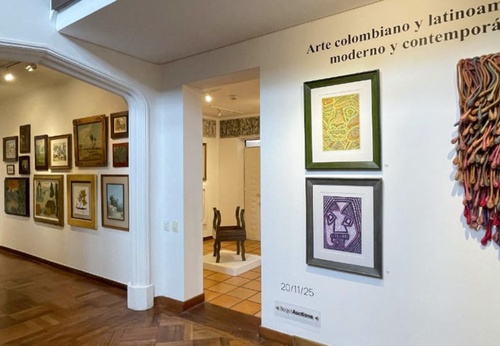
- November 20, 2025
An auction in Bogotá
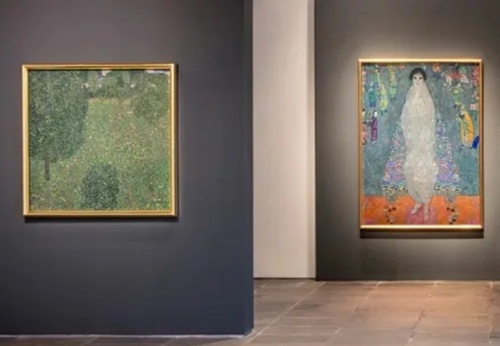
- November 20, 2025
Klimt Breaks Record at Sotheby’s

- November 20, 2025
GAZA FLOOD BLOOD THEN FLOOD

- November 20, 2025
MBS is a guest of Trump

- November 20, 2025
José Elgueta - Chile

- November 19, 2025
Gallery of Illustration by Jose Elgueta – Chile
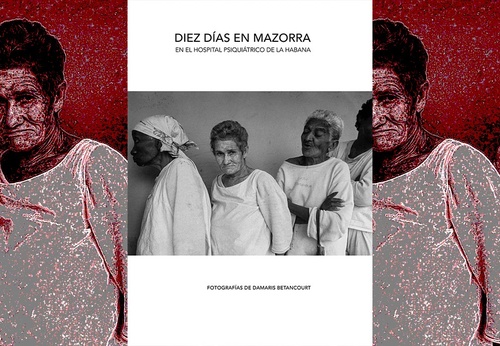
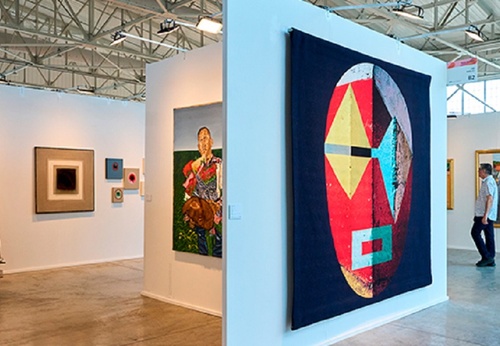

- November 20, 2025
An auction in Bogotá

- November 20, 2025
Klimt Breaks Record at Sotheby’s

- November 19, 2025
Pinta Miami celebrates its 19th edition…

- November 18, 2025
Artists and galleries from Brazil and L…

- November 17, 2025
"Painting in Mexico Today Is More Alive…

- November 17, 2025
Paris Photo Exhibits Iconic Collection …

- November 16, 2025
Art Exhibition in Bogotá

- November 15, 2025
Frida Kahlo's 'The Dream (The Bed)' Exp…

- November 12, 2025
Brescia, an exhibition of works by the …

- November 12, 2025
Uruguayan Artist Joaquín Torres García …

- November 11, 2025
Painting in Mexico Today Is More Alive …

- November 11, 2025
Oaxacan School Dominates Latin American…

- November 10, 2025
Artweek 2025 Celebrates a Decade of Art…

- November 10, 2025
Pop Brasil Arrives at Malba with Over 1…

- November 10, 2025
Adriana Cisneros Pays Tribute to Latin …

- November 10, 2025
Mira Art Fair 2025

- November 09, 2025
MIRA Art Fair 2025: Latin American Art …

- November 09, 2025
The Influence of Renaissance Art on Mod…

- November 06, 2025
Experience the vibrant pulse of Latin A…

- November 06, 2025
The Ministry of Culture invites you to …

- October 08, 2023
Illustrations reflect the brutal Israel…

- December 25, 2023
The jury statement of the Iran-Brazil F…

- July 29, 2023
History of Caricature in Brazil

- September 01, 2023
Neural Filters in new photoshop 2023

- May 22, 2025
Brady Izquierdo’s Personal Exhibition O…

- March 21, 2024
The history of art in Palestine

- April 20, 2024
Poignant Image of Grief Wins Mohammed S…

- June 29, 2024
Exhibition at Centro MariAntonia contra…

- October 21, 2023
Erick Meyenberg and Tania Ragasol at th…

- May 15, 2024
Eleven murals for Gaza painted across t…

- February 18, 2024
7 Ways to Understand What Visual Arts A…

- August 09, 2023
Venezuela mural expresses solidarity wi…

- March 14, 2024
museum of statue of van gogh

- March 15, 2024
museum of sculpture of Salvador Dali

- May 20, 2024
Latin American Festival of Performing A…

- May 25, 2025
Bordalo II to hold exhibition in Paris …

- March 30, 2024
illustration websites in Latin America

- October 23, 2023
Photos by José Luis Díaz of the march o…

- May 27, 2025
Works by Botero, Grau, and 80 other imp…

- December 01, 2023
Latin American International Graffiti F…

- May 15, 2024
Eleven murals for Gaza painted across t…

- February 18, 2024
7 Ways to Understand What Visual Arts A…

- January 02, 2025
13 commemorations that will mark the cu…

- October 17, 2023
The influence of Latin American artists…

- February 03, 2024
THE HISTORY OF NAIF ART

- October 08, 2023
Illustrations reflect the brutal Israel…

- July 02, 2024
One of the largest urban art galleries …

- November 17, 2023
Fernando Botero's work is booming after…

- July 29, 2023
Piracicaba International Humor Exhibiti…

- November 06, 2023
Heba Zagout: Palestinian artist murdere…

- December 25, 2023
The jury statement of the Iran-Brazil F…

- December 10, 2023
Sliman Mansour and Palestinian art on t…

- February 01, 2025
A maior exposição de Botero em Barcelona

- March 14, 2024
museum of statue of van gogh

- March 21, 2024
The history of art in Palestine

- July 20, 2024
First International Mail Art Biennial 2…

- April 20, 2024
Poignant Image of Grief Wins Mohammed S…

- October 30, 2023
Palestinian turns images of the Gaza co…

- September 01, 2023
Neural Filters in new photoshop 2023

- February 06, 2024


